History & Architecture: Springfield United States Courthouse
Springfield United States Courthouse
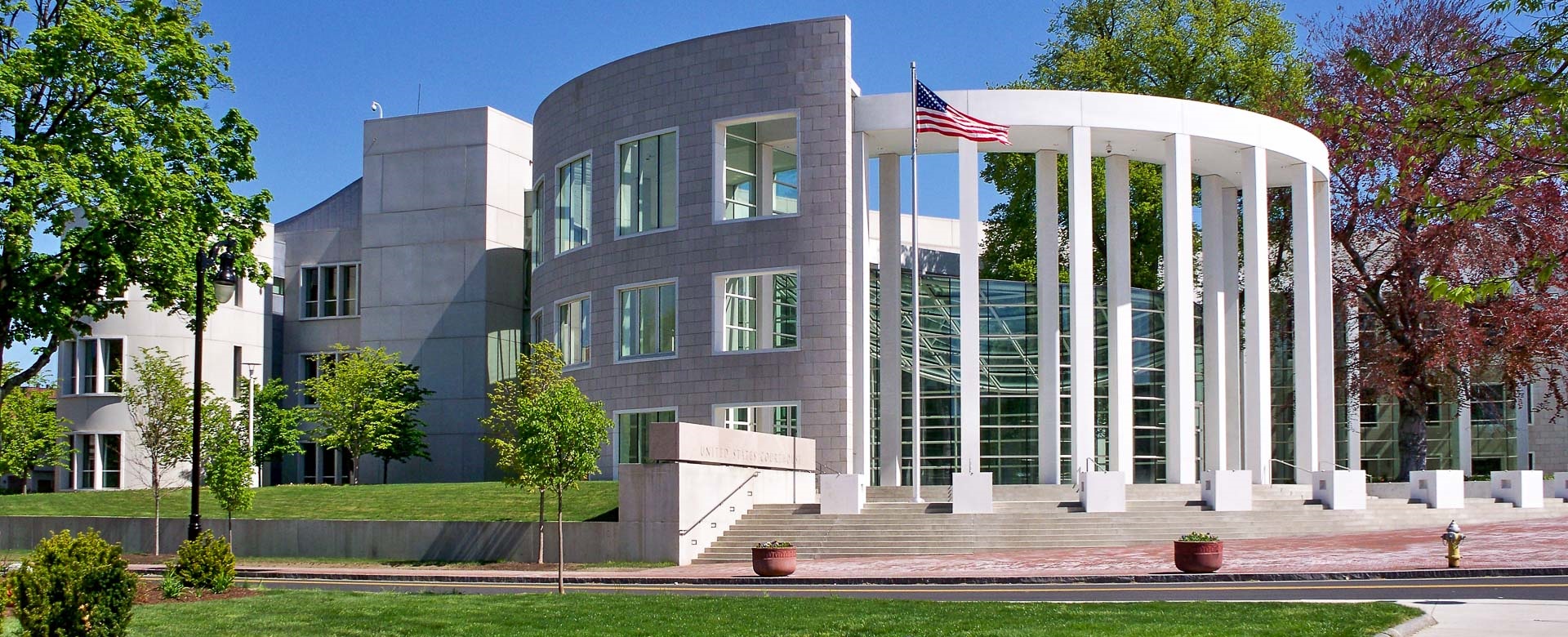
“The Constitution and the notion of the Bill of Rights, both so central to our judiciary system, must be given profound expression in the symbolism of the 21st-century courthouse. The federal courthouse should bridge the authority and order present in historical models with the pluralistic spirit of our time by creating an accessible place in the city that speaks both of community and authority.”
Moshe Safdie, Architect of the Springfield United States Courthouse
Completed in 2008, the newer courthouse, located in the heart of Springfield, stands as a civic landmark along the historic State Street corridor, contributing to the main institutional district of a city rich in history.
Architecture
Learn more about the architecture of the Springfield Courthouse here.
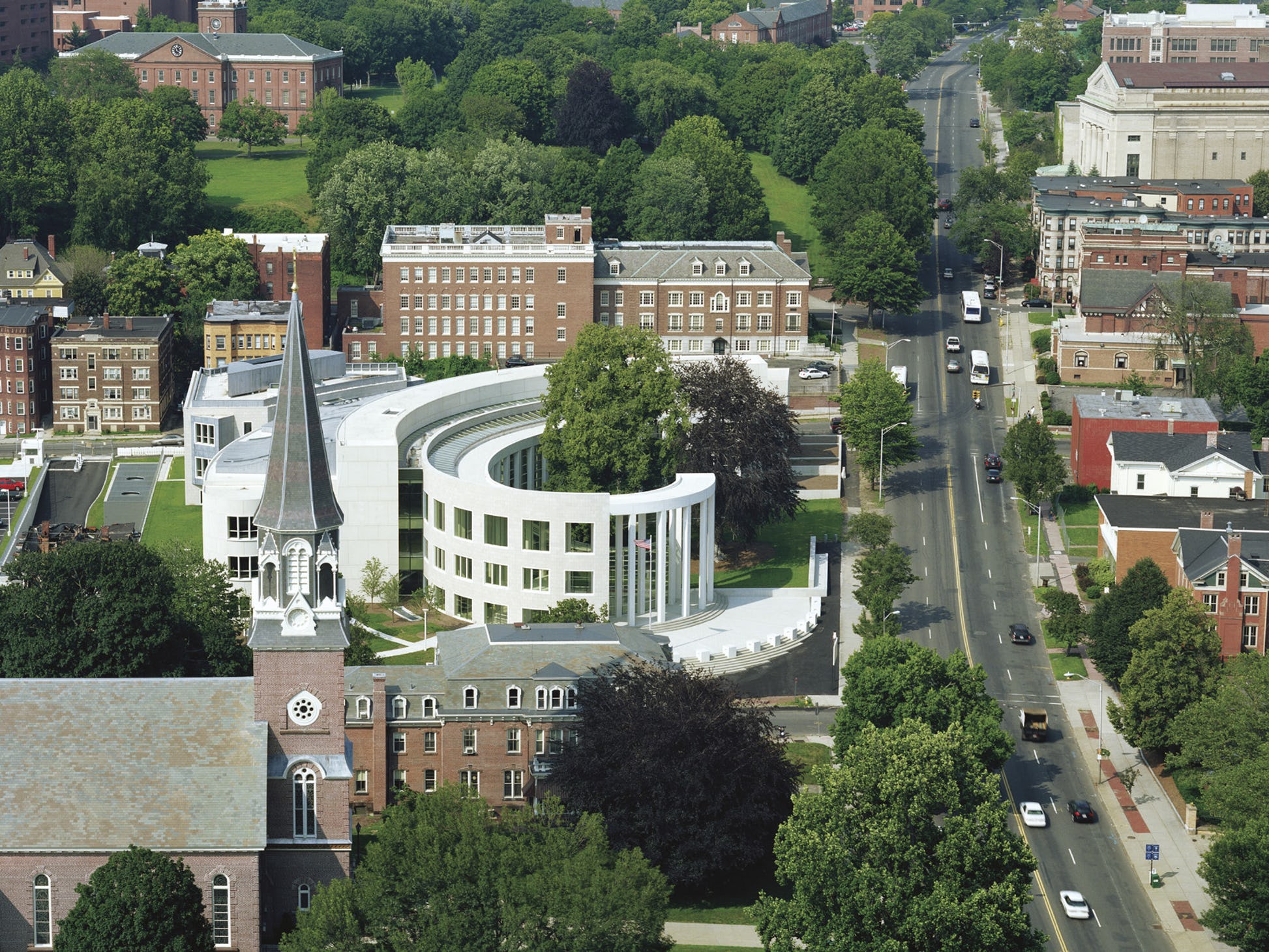
Artwork
"Hills, Fields, River and Two Trees: Scenes from Western Massachusetts" by Ann Brauer
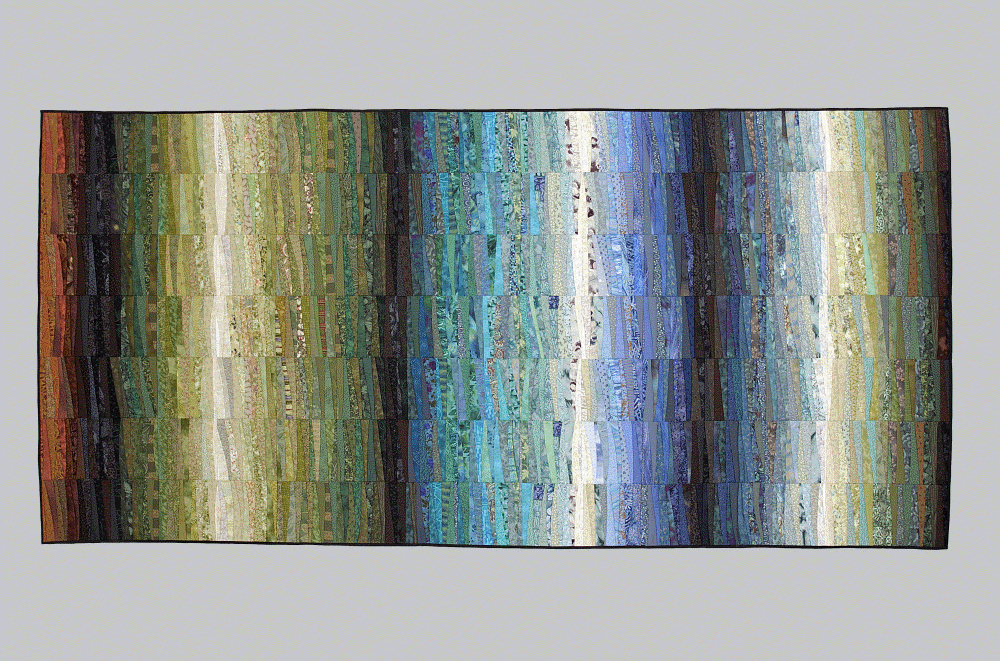
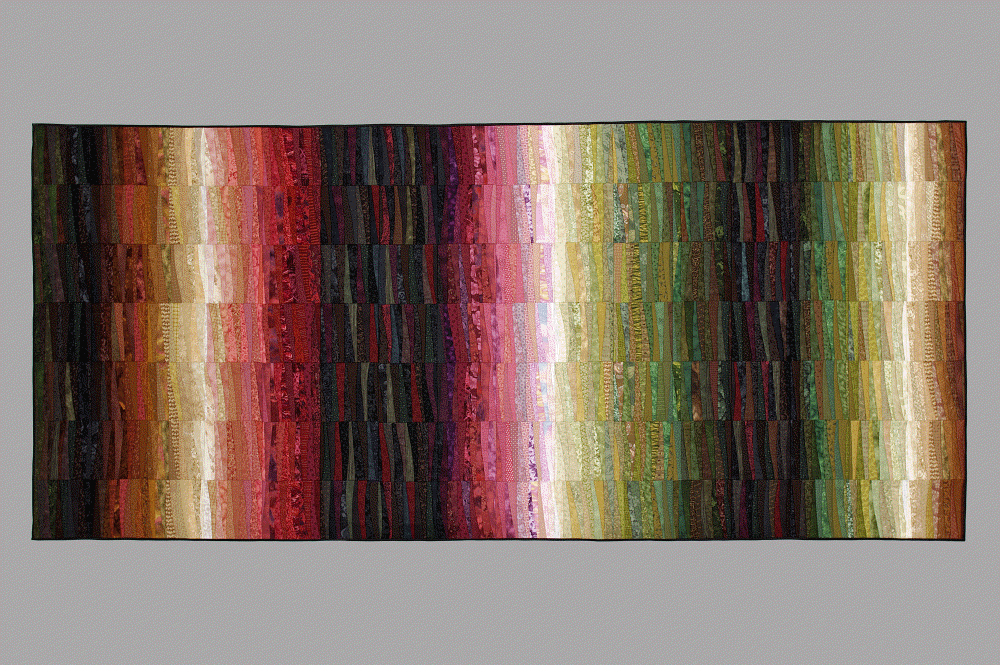
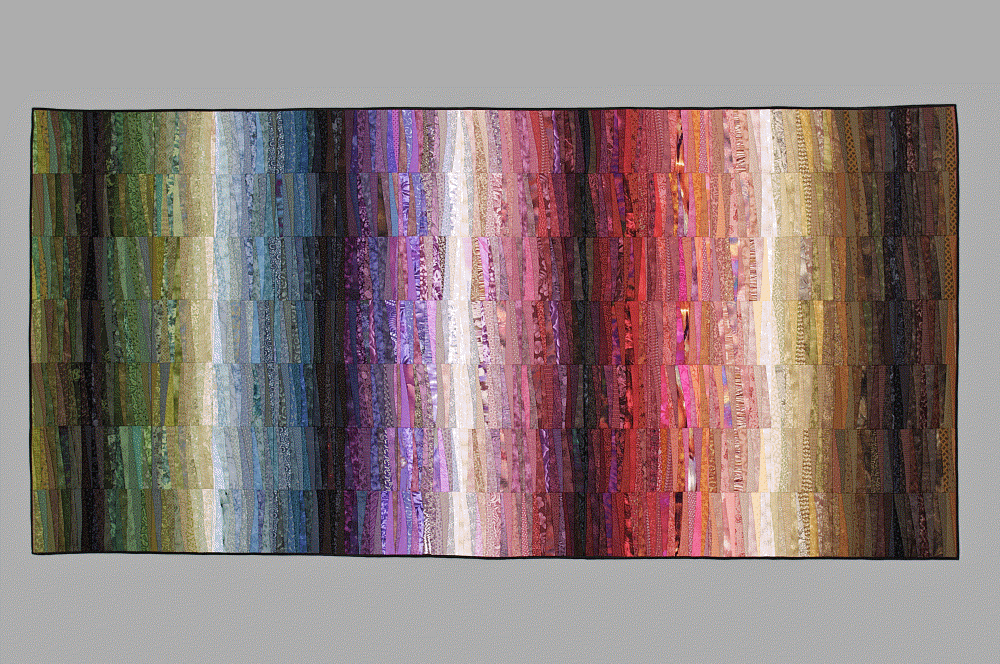
The four courtrooms of the U.S. Courthouse in Springfield are named after the four counties of the federal court's western division: Berkshire, Franklin, Hampshire and Hampden. Inspired by the verdant landscapes of these Massachusetts counties, artist Ann Brauer created four groups of quilted triptychs for the courtrooms.
Each quilt relies on careful modulation of pattern and color to evoke elements of the natural settings that inspired Brauer. These quilts distill impressions of fleeting moments that she experienced in the western Massachusetts landscape, such as sun filtering through crimson autumn leaves, the blue haze on rolling hills in the heat of summer, and the subtle golden colors of a hayfield mowed and raked into rows.
Brauer drew upon the distinct character of each county to give each courtroom’s quilts their own personalities. For the triad of quilts that represent Hampden County, where Springfield is located, Brauer drew upon three major elements: the Connecticut River that flows through the city, the sun as it rises and sets across the landscape, and the massive copper beech and linden trees around which the courthouse curves. Brauer referenced the rich farmland along the Connecticut River for the patterns and colors in the Hampshire quilts. For the Berkshire quilts, Brauer was inspired by the majestic mountains that dominate this western-most county. Franklin County reflects all three of the other counties, with the river, its farms, and the western hills. (Brauer’s studio was in Franklin County, too – in Shelburne Falls, approximately 45 miles north of Springfield.) Together, Brauer’s twelve quilts tell a simple story about the beauty of western Massachusetts, rendered as in impressionistic panorama across all four courtrooms.
"Wall Drawing #1259: Loopy Doopy" by Sol LeWitt
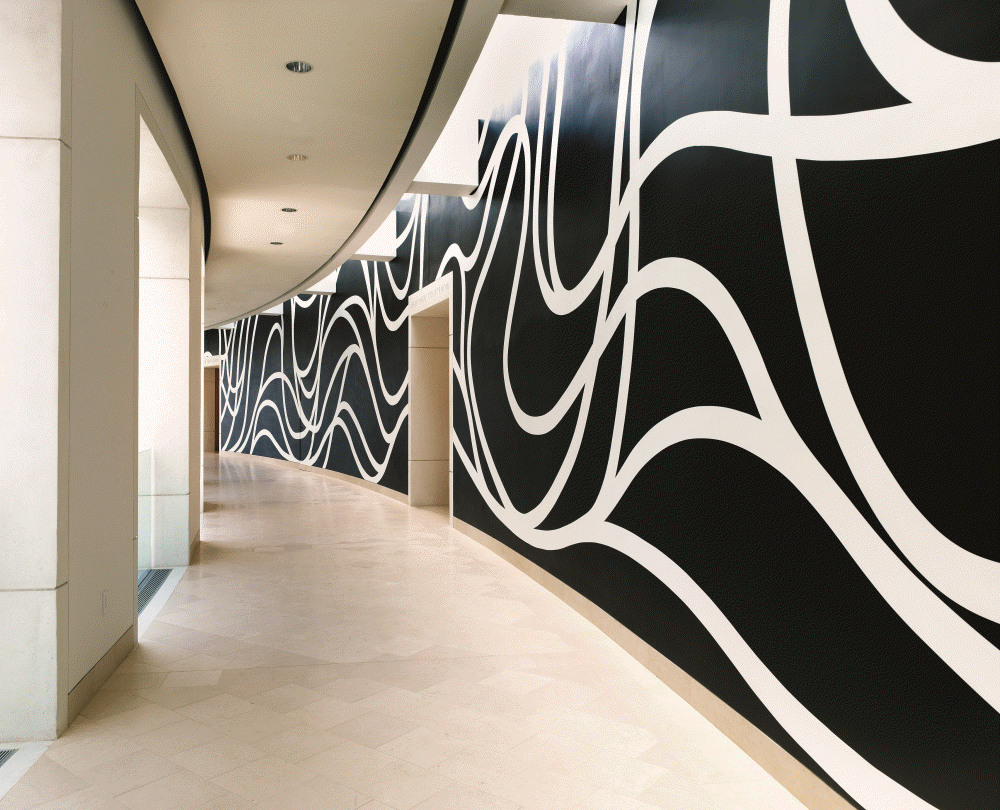
Sol LeWitt was a pioneer of conceptual art, which he helped define in the 1960s and which still exerts wide influence on many artists working today. In LeWitt's often cited Paragraphs on Conceptual Art, he described a method of art making that emphasizes the generative idea for the artwork over its physical creation. "The idea becomes a machine that makes the art," LeWitt wrote. He rejected the notion that artworks must be rare, unique objects hand-made by a solitary artist. For example, one of LeWitt’s most celebrated forms of conceptual art is the wall drawing, which is rendered by collaborating assistants following the artist’s instructions. Over the span of four decades, LeWitt conceived of more than twelve hundred wall drawings, which range from spare pencil lines on white walls to complex geometries painted in vibrant, pulsating colors.
In April 2001, LeWitt composed an enormous wall drawing for the courthouse in Springfield. A pattern of undulating lines sweeps across the large, curved wall through which visitors enter the building’s courtrooms. The pattern is derived from drawings that LeWitt made by holding two pencils together to create parallel wavy lines. The spaces between the parallel pencil trails form the white lines in the courthouse wall drawing. While the composition of the lines is dynamic, the palette is simple black and white. Some versions of LeWitt's other wall drawings that share the title Loopy Doopy are brightly colored: orange lines on a green background, blue lines on a red background, purple on yellow, and so forth. For the courthouse in Springfield, LeWitt thought the dignified white-on-black combination would be the most appropriate. The ebullient white lines communicate a sense of movement and energy, as the playful title Loopy Doopy suggests. The patterns are not meant to be symbolic or representative of anything, although viewers may create their own interpretations. The wall drawing might evoke water currents, sound waves, winding vines, or countless other associations. This complete accessibility and openness of meaning are hallmarks of LeWitt’s art and are also well suited to the civic function of the courthouse.
